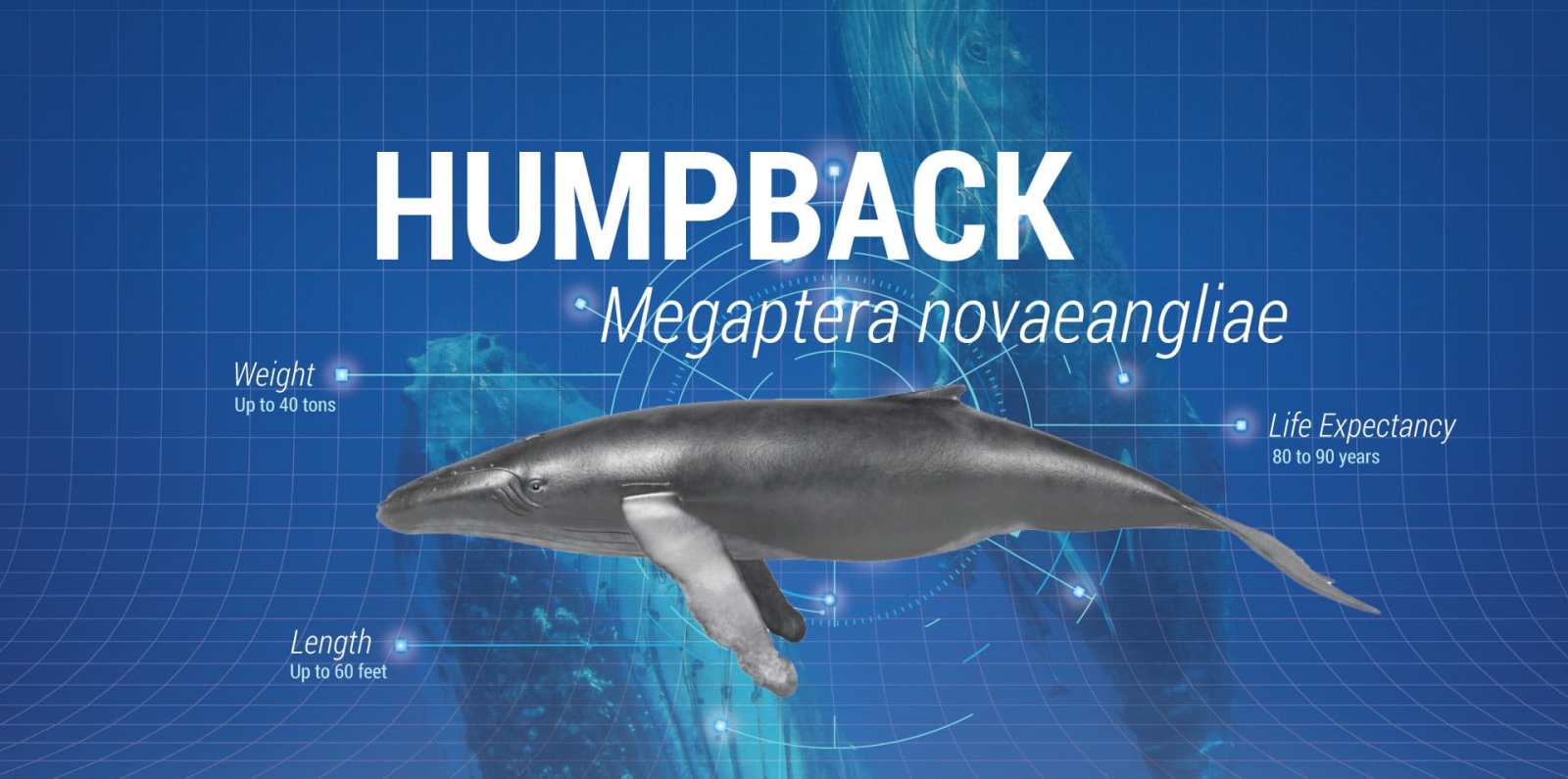HUMPBACK WHALE


Before a moratorium on commercial whaling in 1985, all populations of humpback whales were greatly reduced, some by more than 95 percent. The species is increasing in abundance in much of its range, but faces threats from entanglement in fishing gear, vessel strikes, vessel-based harassment, underwater noise, and habitat impacts. Humpback whales live in oceans around the world. They travel incredible distances every year and have one of the longest migrations of any mammal on the planet. Some populations swim 5,000 miles from tropical breeding grounds to colder, plentiful feeding grounds. The humpback whale takes its common name from the distinctive hump on its back. Its long pectoral fins inspired its scientific name, Megaptera, which means “big-winged.” Humpback whales are a favorite of whale watchers―they are often surface active, jumping out of the water and slapping the surface with their pectoral fins or tails.
PREY
Humpback whales filter-feed on small crustaceans (mostly krill) and small fish, consuming up to 3,000 pounds of food per day. Humpback whales use several “tools” to help them herd, corral, and disorient prey, including: bubbles, sounds, the seafloor, and even pectoral fins. One specific feeding method seen in Alaska waters, called “bubble net feeding,” involves using curtains of air bubbles to condense prey. Once the fish are corralled and pushed toward the surface, the whales lunge upward through the bubble net with open mouths engulfing their prey.
PREDATORS
Killer whales sometimes prey upon humpback whales.
THREATS
Inadvertent vessel strikes can injure or kill humpback whales. Humpback whales are vulnerable to vessel strikes throughout their range, but the risk is much higher in some coastal areas with heavy ship traffic. Humpback whales can become entangled by many different gear types including moorings, traps, pots, or gillnets. Once entangled, if they are able to move the gear, the whale may drag and swim with attached gear for long distances, ultimately resulting in fatigue, compromised feeding ability, or severe injury, which may lead to reduced reproductive success and death. There is evidence to suggest that most humpback whales experience entanglement over the course of their lives, but are often able to shed the gear on their own. However, the portion of whales that become entangled and do not survive is unknown.
(Information from NOAA Fisheries. fisheries.noaa.gov)
